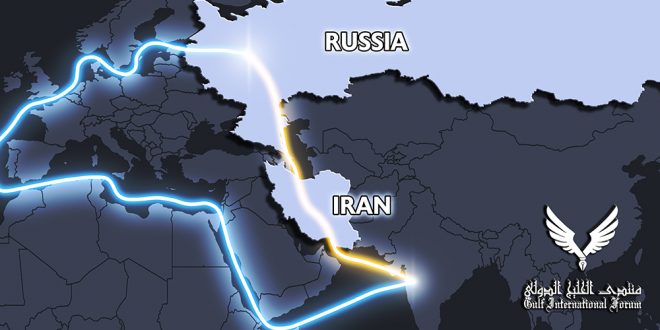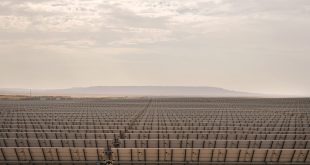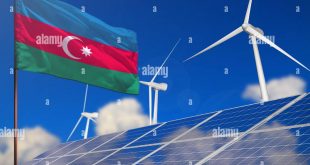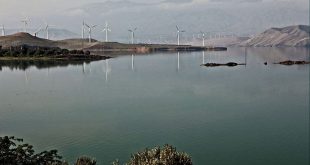The construction of the International North-South Transport Corridor is another way for Iran and Russia to circumvent Western sanctions and lower trade cost while increasing its volume.
After the United States and the European Union imposed extensive sanctions on Russia in response to its invasion of Ukraine in February 2022, Russia joined Iran as one of the most economically isolated countries in the world. The international sanctions imposed against Moscow and Tehran limit their ability to access global financial markets and conduct international trade. As a result, both countries look to expand economic ties with neighboring countries in Western and Central Asia to bypass sanctions. In particular, Iran and Russia have been working to strengthen their trade ties and improve joint transportation infrastructure. One of the key trade routes between Iran and Russia is the International North-South Transport Corridor (INSTC), a multimodal transportation network connecting India and the Persian Gulf to Russia and Northern Europe. The transport corridor is crucial to Russian and Iranian relations and trade.
The corridor includes seaports on the Persian Gulf and in the Caspian region, as well as road and rail routes. The rail route from Iran to Russia will bring both parties economic benefits, as cargo will be able to move quickly and easily between the two nations. Railways are expected to play a key role in the development of the INSTC, with the completion of the Rasht-Astara railway which is a crucial component of the corridor. This railway will link the Iranian port of Bandar-e Anzali to Russia’s railway network and beyond, providing a direct and efficient route for goods to travel.
However, the North-South Corridor is still under development and has not yet been fully operationalized. While some sections of the corridor have been completed, including the railway between Iran and Azerbaijan, many road connections within Iran are still under construction. The development of the North-South Corridor is an alleged priority for the administration of Ebrahim Raisi since it is crucial for increasing trade and economic cooperation between Iran and its neighbors. Since the inauguration of Ebrahim Raisi in 2021, however, Raisi’s administration has faced challenges in providing the necessary financial resources to complete the corridor, including the construction of the Rasht-Astara railway. The use of the “oil clearing” method—using Iran’s oil reserves as collateral to secure financing for the project from Russia or another country is a new yet controversial method for financing.
As noted earlier, the North-South Corridor has the potential to significantly boost trade and economic ties between these countries and reduce dependence on traditional trade routes that are more vulnerable to economic sanctions. Iran and Russia have been working jointly to develop the Rasht-Astara railway project. Russia has provided technical and financial assistance to Iran to build the railway since the two countries have agreed to use the “oil-for-goods” mechanism to finance the project.
INSTC Role in Addressing Iran’s Needs
Over the last year, INSTC has become vital for trade and commerce between the two nations. The transportation of diesel and gasoline by rail from Russia to Iran and vice versa is becoming increasingly important due to high transportation rates and limits for sea transportation. The use of rail transportation emerged as a convenient way to bypass economic sanctions imposed by the G7. Additionally, Iran has been able to use its location as a hub for the transit of goods between the East and the West—a development that could also benefit Russia by allowing it to access new markets for its energy exports.
The railway could also help Iran overcome current energy and economic crises. Despite its vast oil and gas reserves, Iran faced an energy crisis last winter after it was unable to produce enough diesel to meet domestic demand. Several factors contributed to that shortage; the most significant was likely the economic sanctions that have been imposed on Iran, which have limited its ability to produce or import refined petroleum products, including diesel. In addition, Iran has experienced significant shortfalls in domestic refining capacity, which has left the country dependent on imports to meet its demand for diesel and other refined petroleum products. This dependency on imports has made Iran vulnerable to fluctuations in global oil prices, as well as to disruptions in global supply chains.
The diesel shortage in Iran is a complicated issue that will require a comprehensive approach by Iranian lawmakers to address. While the supply of gasoline and diesel from Russia may provide some relief in the short term, Iranian officials should prioritize the development of sustainable solutions for meeting Iran’s energy needs over the long term. In the short run, Russia’s delivery of refined petroleum products by rail could provide an alternative means of transportation that is less susceptible to disruption than sea transport, which is subject to greater scrutiny and potential sanctions than a land route running entirely between Russia, Iran, and non-aligned Central Asian nations.
Higher trade recorded between Iran and Russia would also give Tehran a better position in economic negotiations with other Central Asian states. Iran could benefit from trading with neighboring countries using oil and gas swaps, which would allow it to access Russian energy resources and trade them for other goods or energy resources. Furthermore, the development of transportation infrastructure, such as the North-South Corridor and other trade routes, could help facilitate the exchange of goods and resources between the two countries and beyond. The ability of Iran and Russia to expand their energy cooperation is ultimately subject to several factors, including the potential lifting of Western sanctions, the stability of the region, and Iran’s ability to attract foreign investment in its energy sector.
Challenges and Opportunities
The development of the rail route will encounter other hurdles over time. It could raise concerns among other countries in the region, who may view it as a threat to their own economic interests. For instance, Azerbaijan, Armenia, or Turkey could see the rail route as a potential threat to their own transportation networks and transit terms. They may try to negotiate higher transit fees or impose restrictions on the use of the rail route. INSTC will also pass through regions that are prone to security threats, like conflict zones or areas with a high risk of terrorism. Other countries in the region may view the increased traffic along the rail route as a potential security threat and raise concerns about the impact on regional stability.
Additionally, there may be challenges associated with navigating the complex legal and regulatory frameworks that govern international trade and transportation—further complicated by the desire of the West to sanction Russo-Iranian trade. While the development of this new transcontinental trade route is still in its early stages, it will be important to monitor its progress and consider its potential impact on regional and global trade dynamics. Russia has already started to supply fuel to Iran by rail, and there have been reports of increasing trade between the two countries through the Caspian Sea.
The future of Iran-Russia trade routes and the North-South Corridor also largely depends on the continued cooperation between the two countries and their ability to overcome the challenges posed by Western sanctions. Completing the Rasht-Astara railway project is one major step towards achieving this goal, as it will provide a more direct and efficient route for goods to travel between Iran, Russia, and beyond. Russia’s recent delivery of fuel to Iran by rail is a sign of the increasing trade ties between the two countries and their willingness to explore new trade routes. The success of these initiatives will also depend on the ability of Iran and Russia to secure the necessary funding for infrastructure development, as well as the political stability of the region.
Despite delay and difficulties facing the project, INSTC is important for the future of Iran-Russia trade routes, as both countries continue to deepen their economic ties and explore new avenues for cooperation in the energy and transportation sectors. Overall, the development of trade routes and railways between Iran and Russia is seen crucial for boosting trade and economic ties between these countries and beyond, and reducing their dependence on traditional trade routes that are vulnerable to foreign supply shocks. The future of Iran-Russia trade routes and the North-South Corridor looks promising, as both countries appear interested in continuing to work together to overcome the challenges posed by Western sanctions and develop new avenues for economic cooperation.
Competition from other transportation routes, such as sea and air transportation, also poses a challenge for railways between Iran and Russia. These modes of transportation offer faster transit times and greater flexibility, which can be attractive to businesses looking to transport their goods quickly and efficiently. The challenges facing the railroad and trade routes between Iran and Russia are significant and dealing with these challenges requires major dedication and determination from the two countries. Improving infrastructure, addressing geopolitical tensions, and enhancing security are among the many steps that Iran and Russia will need to pursue to make the partnership fruitful. However, the region’s potential for growth and economic development is vast, and should Tehran, Moscow, and other regional states resolve the challenges they face, they will be able to achieve this potential and develop a robust intra-Asian trading network shielded from the pressures of outside forces.





